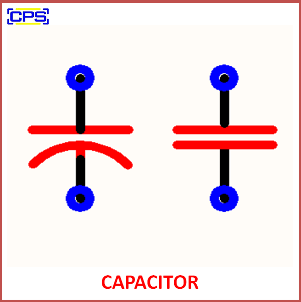A capacitor is a passive electronic component that stores and releases electrical energy in the form of an electric field. It consists of two conductive plates separated by an insulating material called a dielectric.

Key Features of a Capacitor:
- Structure:
- Plates: Two conductive surfaces that hold opposite charges.
- Dielectric: An insulating layer that prevents direct current (DC) flow but allows the formation of an electric field.
- Capacitance: The ability to store charge, measured in farads (F). It depends on:
- Surface area of the plates.
- Distance between the plates.
- Permittivity of the dielectric material.
- Charging and Discharging:
- Stores energy when connected to a power source.
- Releases energy when the circuit demands it.
Types of Capacitors:
- Electrolytic Capacitors: High capacitance, used in power supplies.
- Ceramic Capacitors: Small and versatile, used in high-frequency circuits.
- Film Capacitors: Stable and reliable, used in precision applications.
- Supercapacitors: High energy storage, used in energy backup systems.
Applications:
- Energy Storage: Temporary storage of electrical energy.
- Filtering: Smoothing out voltage fluctuations in power supplies.
- Timing Circuits: Creating delays or oscillations.
- Coupling and Decoupling: Blocking DC while allowing AC signals to pass.
Capacitors are essential in electronics for managing energy flow and signal processing in a wide range of devices and systems.
